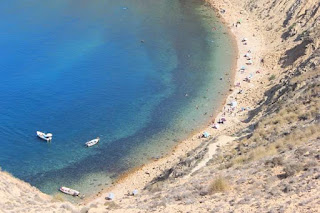FES CITY
ruled the Maghreb countries lie, the Old City of Fes, or Fes al Bali as it is known, appears as a round platter. Imposed over the city are the roofs of old houses, cluttered with satellite dishes, surrounded by minarets, and the leather tanneries that serve as the perpetual backdrop of all the images of the city.
Established in the ninth century CE, Fes became the Moroccan capital during the Marinid rule in the 13th century, and remained so until 1912.
After the political capital was moved to Rabat, Fes continued to be known as the scientific and cultural capital, particularly due to the presence of the University of Al Quaraouiyine. The university was established in 859 CE by Fatima al-Fihri, who came from the Tunisian city of Qayrawan. Today, it stands as the oldest university in the world that remains open.
When the UNESCO listed the Old City as a Heritage Site in 1981, it cited it as a “living witness to a flourishing city of the eastern Mediterranean having exercised considerable influence mainly from the 12th to the 15th centuries, on the development of architecture, monumental arts and town-planning, notably in North Africa, Andalousia and in Sub-Saharan Africa.”
Coming from the Levant, before entering the city from Bab Bou Jeloud, you must double check the meanings of words before assuming that you have understood them. Words that may otherwise seem familiar in a different context have taken on entirely different connotations in the Moroccan dialect.
After entering from the city gate, you begin striking a path amid the popular local restaurants surrounding the gates, and sellers of every type of meat, vegetable, and fruit, as well as Moroccan fatayer, and pictures of King Mohammed VI.
On this path, you will come across the Bou Inaniya Madrasa, which dates back to the 14th century, and was named after its Marinid





Comments
Post a Comment